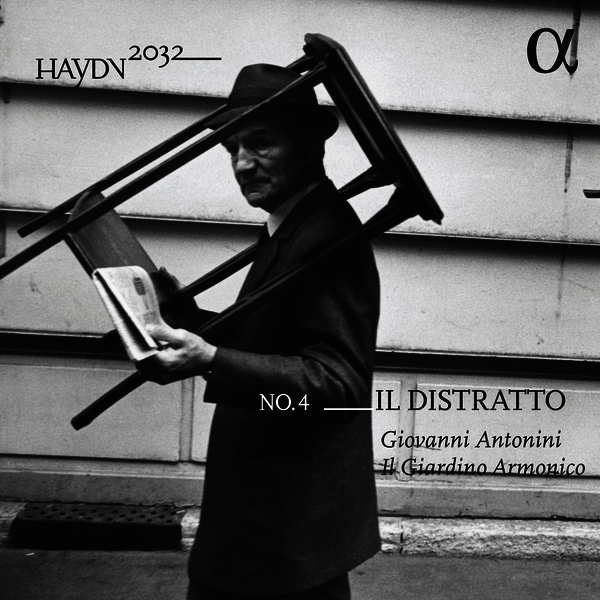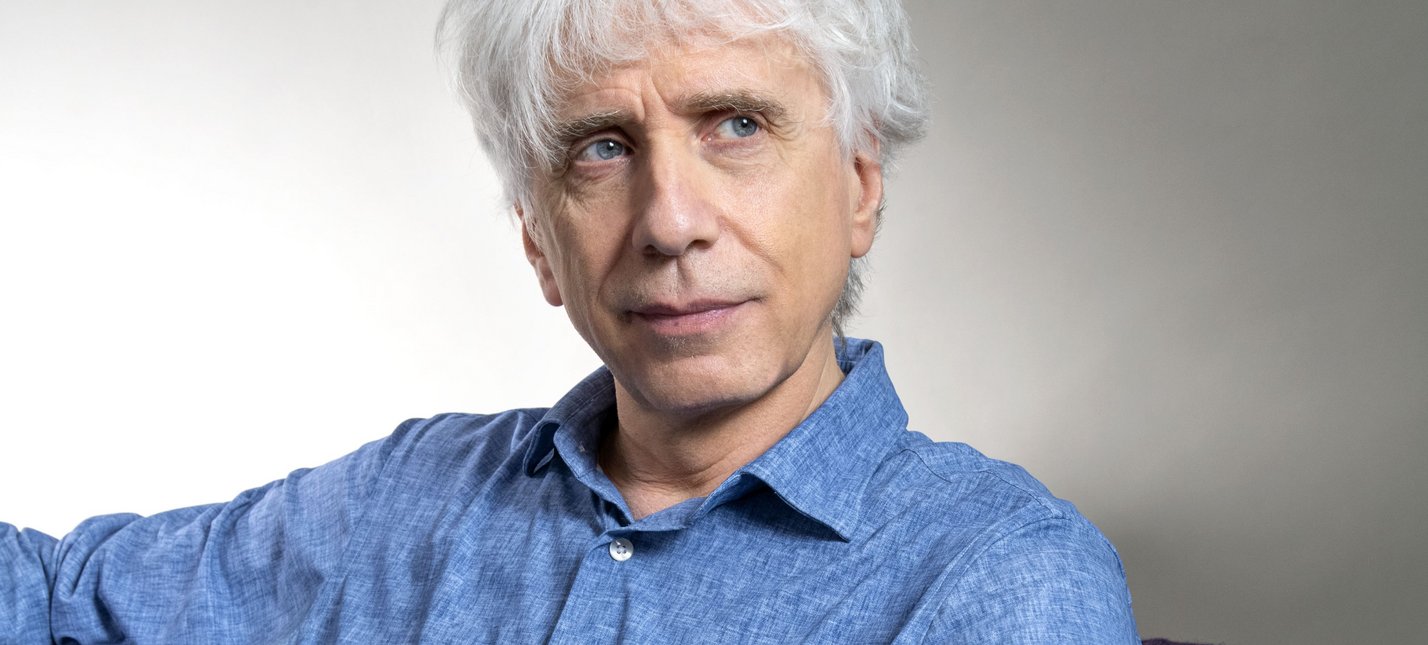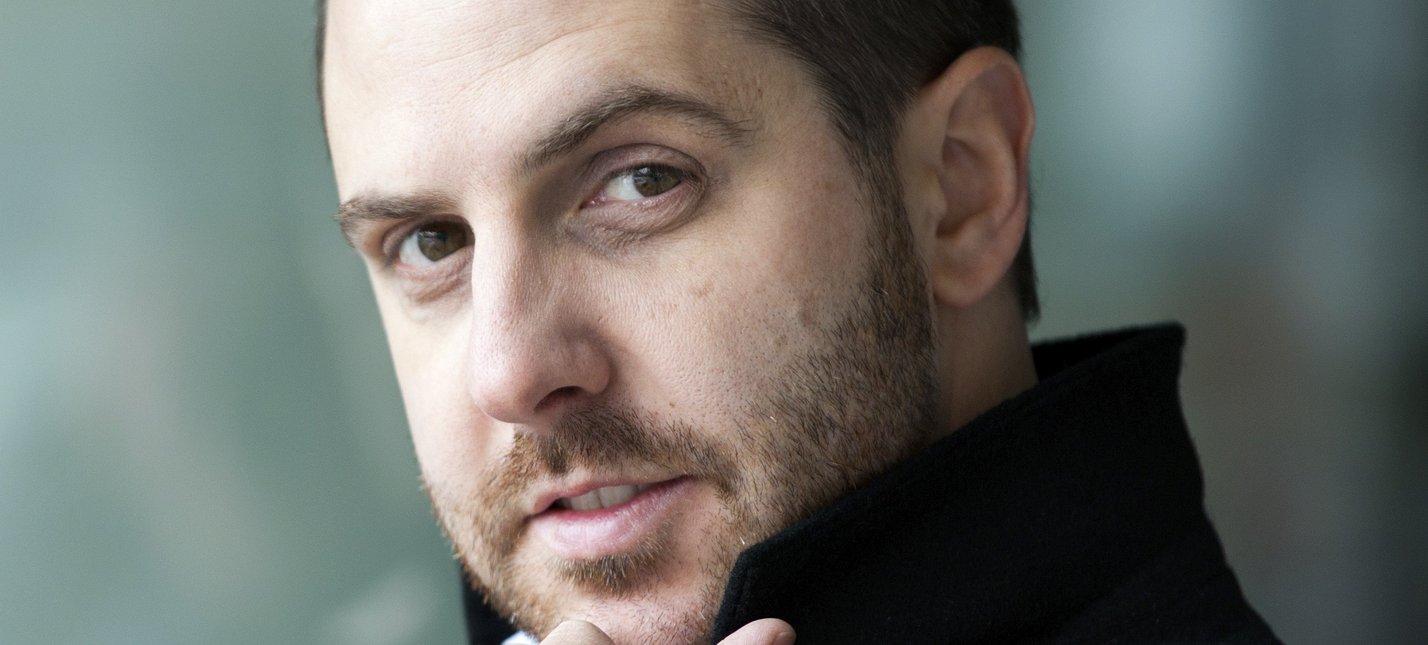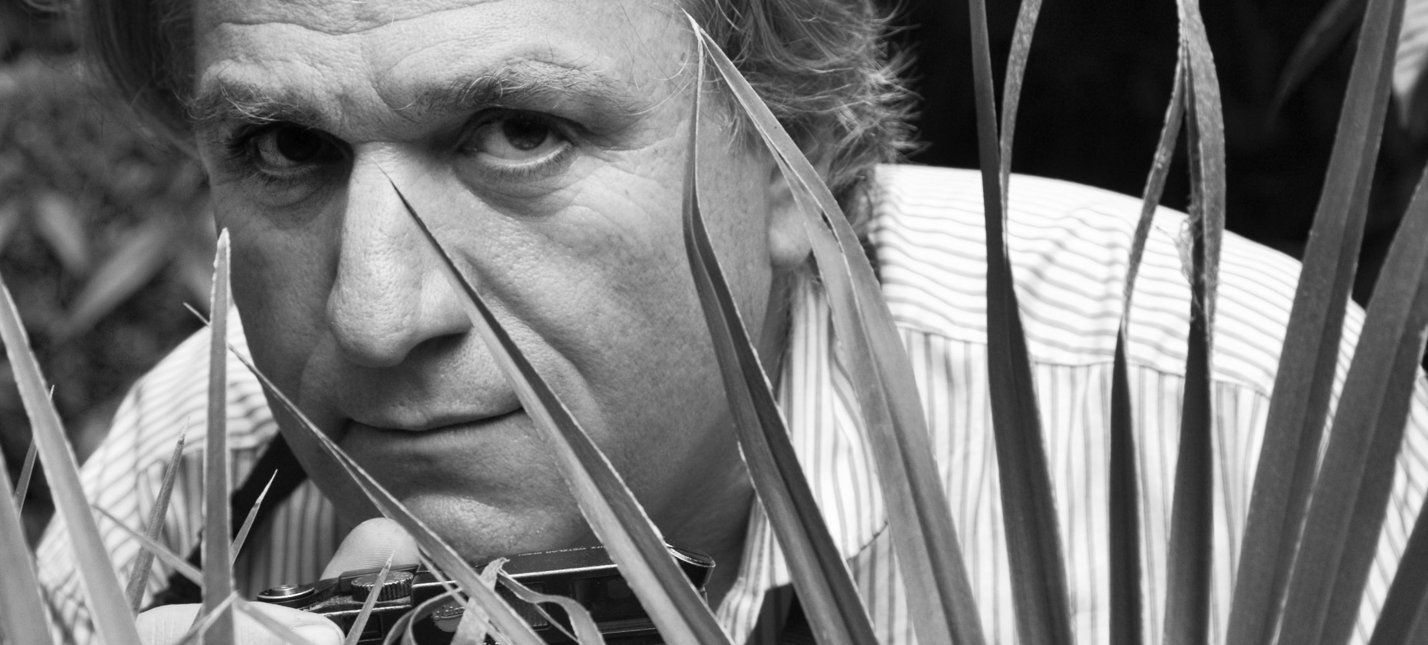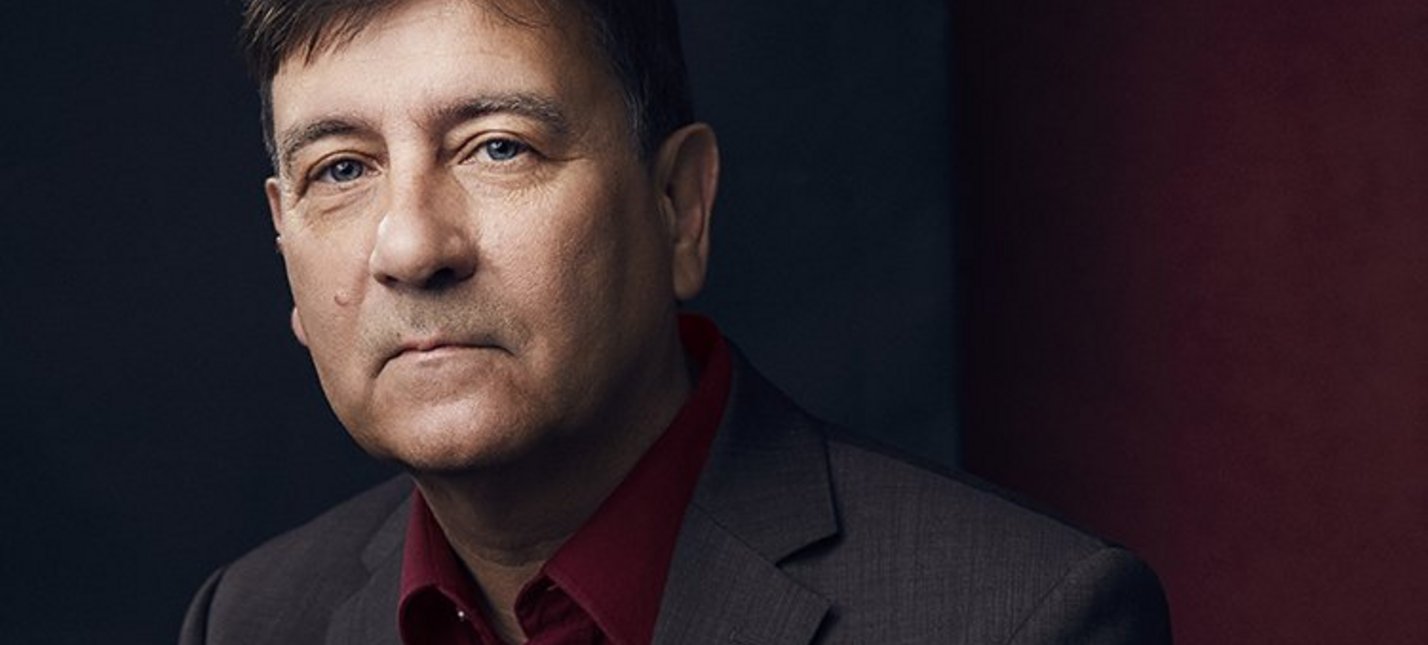NO.4 __IL DISTRATTO
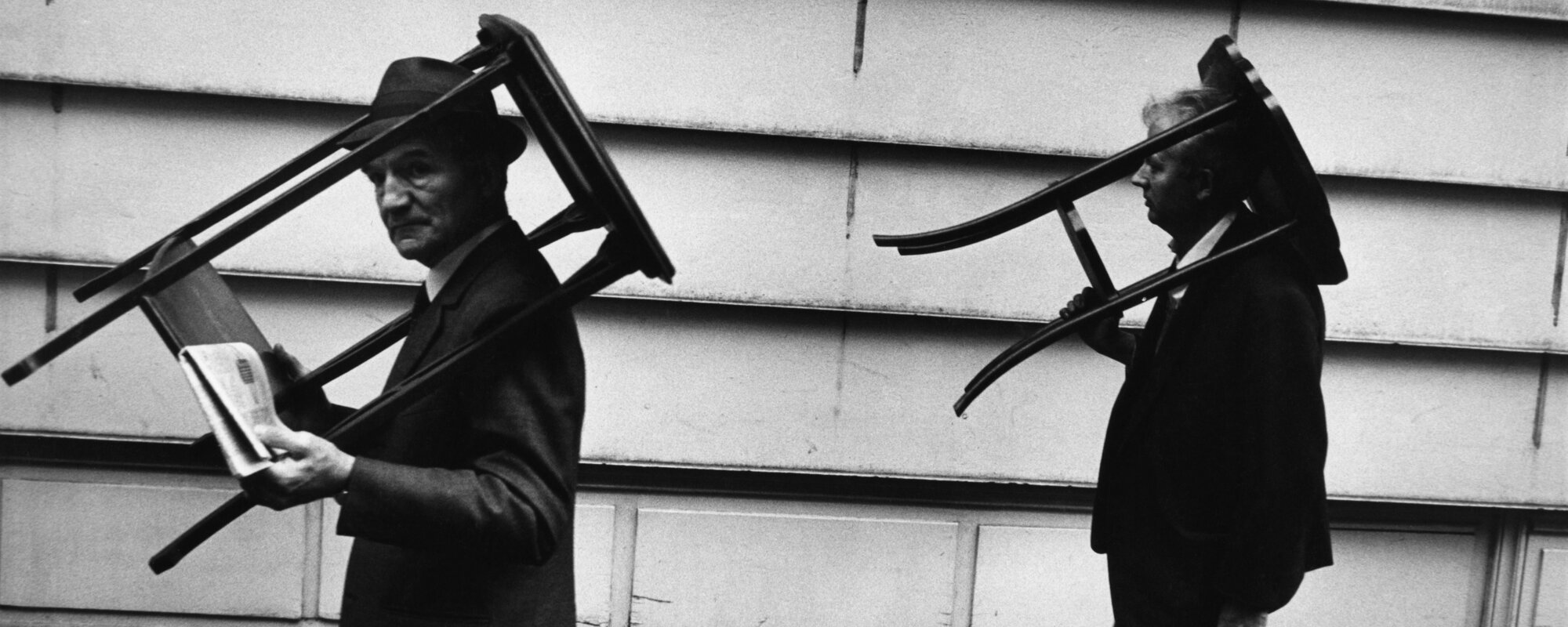
Il Giardino Armonico
Giovanni Antonini, conductor
Riccardo Novaro, baritone
Alain Claude Sulzer, writer
Richard Kalvar, photographer
Symphonies No.12, No.60 "Il Distratto" and No.70
D. Cimarosa (1749–1801): Il maestro di cappella (1793?) (Scena for bass-baritone and orchestra)
Program
Joseph Haydn (1732–1809): Symphony No.12 in E Major, Hob. I:12 (1763)
Allegro / Adagio / Finale. Presto
SYMPHONY NO.12 IN E MAJOR HOB. I:12 (1763)
Time of creation: [spring?] 1763
Allegro / Adagio / Finale. Presto
Christian Moritz-Bauer
Although at first glance the oldest piece of music in the fourth project of Haydn2032 is only a simple three-movement symphony, it may possibly conceal a ‘second nature’. The person responsible for this discovery, the Austrian conductor and pianist Manfred Huss, was enticed onto the trail by his research into Haydn’s ‘very first opera’.
Connoisseurs will already know that we are talking about the festa teatrale Acide, which enjoyed an appropriately festive premiere in Eisenstadt on 11 January 1763 at the wedding feast of Count Anton Esterházy and Countess Maria Theresia Erdődy. At two points in the action of this one-act piece, which unfortunately has survived only in fragmentary form, a sinfonia – an instrumental interlude – is required, first to depict the ‘lamentation of the Nereids’ over the death of Acide (Acis), who has been slain by the Cyclops Polifemo (Polyphemus), and then to announce an unexpected turn for the better when the blood of the nymph’s son is transformed into a bubbling fountain and he himself into a river god, so that henceforth he can always be close to his beloved Galatea.
At any rate, an opportunity for the transformation of the intermezzi from Acide into parts of the Symphony in E major Hob. I:12 (of which the autograph survives) may have been provided by the dinner held on 19 February 1763 at the Palais Esterházy in Vienna, followed by a ‘grand Concert’, which is reported in the famous diaries of Count Carl Johann Christian von Zinzendorf. The symphony was not played until after the guests had been fed, which may well have been conducive to the pleasure of listening; it is noteworthy that the opening Allegro begins unusually softly and with a lilting string melody in unison. The same basic mood, which will soon lead into a powerful tutti, definitely seems to open up a perspective on a happy future illuminated by the warming fire of love, as the theorist Georg Joseph Vogler – who had substantial theatrical experience – confirms in his treatise on the characteristics of the different keys (1779).
The fact that, according to James Webster, the ensuing Adagio transports us into an ‘“operatic” world full of unison forte outbursts, dissonances, chromaticism and deceptive cadences’ does indeed seem ‘strange’, and his conjecture that the movement, oscillating between a tenderly lamenting E minor and a darkly louring B minor, ‘carried extramusical associations’ is perfectly comprehensible, now that we are aware of the circumstances of composition. A Presto that could easily have been a theatrical finale concludes what Carl Ferdinand Pohl, the great Haydn biographer of the nineteenth century, called ‘a little symphony, but written in a felicitous moment’.
to the shop
Joseph Haydn (1732–1809): Symphony No.60 «Il Distratto» in C Major Hob. I:60 (1774)
Adagio – Presto / Andante / Menuetto non troppo Presto – Trio / Presto / Adagio – Allegro / Finale. Prestissimo
SYMPHONY NO.60 IN C MAJOR «IL DISTRATTO» HOB. I:60 (1774)
Time of creation: before 30.6.1774 [1rst half 1774]
Adagio – Presto / Andante / Menuetto non troppo Presto – Trio / Presto / Adagio – Allegro / Finale. Prestissimo
Christian Moritz-Bauer
The city of Pressburg – once the capital and coronation city of Habsburg Upper Hungary (and now Bratislava in Slovakia) – was in the late eighteenth century a musical centre of international standing. No fewer than four permanent orchestras were active there more or less independently. Moreover, these cultural riches were not viewed as the sole privilege of the nobility: venues like the summer concerts of Count Batthyáni or the court theatre of Count Erdödy, with their broadly based public, offered an ideal platform that local composers such as Anton Zimmermann, Johannes Matthias Untersperger and Georg Druschetzky were not the only ones to avail themselves of. Dittersdorf, Vanhal, Mozart, Salieri and later even Beethoven – a whole host of artists of European stature performed here, as did the leading lights of contemporary theatrical life: Mingotti, Zamperini, Wahr, Schikaneder. Coverage of these events was in the hands of the Pressburger Zeitung. But this twice-weekly newspaper, printed by the firm of Johann Michael Landerer for a readership that extended far beyond the local sphere, also reported news from home and abroad, such as the following article by a correspondent published on 6 July 1774:
Eszterház, 30 June. High-ranking dignitaries from abroad are expected today, namely the Ambassador of Modena along with one of the most distinguished gentlemen of Italy. They will spend two days here and inspect everything worth seeing. Although His Princely Highness is absent, the most pleasant arrangements have been made to entertain the visitors. This evening there is a German comedy, Der Triumph der Freundschaft, followed by a serenade and dinner. Tomorrow they will view the magnificent castle and garden, the grand new ballroom and the new marionette theatre. That evening there will be the Italian opera L’infedeltà delusa. The music is by Herr Kapellmeister Joseph Haydn. This admirable composer also recently wrote, for Herr Wahr’s company’s production of the comedy Der Zerstreute, original music which connoisseurs consider to be a masterpiece. One observes, here in a vein of musical comedy, the same spirit that enlivens all Haydn’s works. To the admiration of connoisseurs and the sheer delight of listeners, he displays masterly variety, switching from the most affected pomposity to low humour, so that H[aydn] and Regnard vie with one another as to who is the more capriciously absent-minded.
Joseph Haydn’s visits to Pressburg – which took place primarily in the 1770s and were mostly of a business, but sometimes also of a private nature – brought in their wake a series of feted musical performances, as on 22 November 1774, when Der Zerstreute (The absent-minded gentleman), a comedy ‘freely imitated from the French of M. Regnard’ [Le Distrait, 1697], was presented with the music of the Esterházy Kapellmeister. And it was again the Pressburger Zeitung that reported the event:
On Tuesday, St Cecilia’s Day, Der Zerstreute was played. Herr von Haydn has written singular music for it, with which our readers have already been acquainted by articles from Eszterház published in earlier numbers. Here we will only remind them that it is excellent, quite excellent, and that the finale had to be repeated, since the audience would not stop clapping. In that same movement, the allusion to the absent-minded gentleman who had forgotten on his wedding day that he was the groom, and therefore had to tie a knot in his handkerchief, is extremely well done. The musicians begin the piece most pompously and remember only after a while that their instruments have not been tuned.
The music Haydn contributed to the play performed by Carl Wahr’s theatre company, which was resident at Eszterháza during the summer and in Pressburg during the winter, consists of the overture, four entr’actes, and a finale to be played at the end of the performance. Almost thirty years later, the composer was once again involved with his work. An unexpected request prompted him to address the following lines to Joseph Elssler jun., an oboist in Eisenstadt and brother of his copyist and factotum Johann Elssler:
Vienna, 5 June 1803.
Dearest Elsler!
Please be so kind as to send up to me, at the very first opportunity, the old symphony called DIE ZERSTREUTE, for Her Majesty the Empress has expressed a desire to hear the old pancake. I therefore ask Herr Messner to lend it to me for a few days; I will not damage it in any way... With my compliments,
Jos. Haydn mpria
And the Esterházy archives in the Hungarian National Library do indeed contain a ‘Sinfonia in C... per la commedia intitolata Il Distratto’ in Elssler’s handwriting, which Anthony van Hoboken later classified as no.60 among Haydn’s symphonies.
There have been repeated discussions of the programmatic content of Il distratto, but no one knows whether they tally with the composer’s intentions. Here we will quote Robert A. Green’s summary of just a few of the most important plot threads of the comedy for which the music was written:
Most of the characters... are associated with the commedia dell’arte and as stock types were immediately intelligible as such to Haydn and the audiences of his day. Clarice and Isabelle are two well-bred young ladies. The Chevalier, Clarice’s brother, is that member of the soldier-nobility who carouses, chases women, and who is well-schooled in the arts of the galant. Mme Grognac is the authoritarian mother searching for a wealthy mate for Isabelle irrespective of her daughter's wishes. The avarice of Mme Grognac is thoroughly exploited... Lisette and Carlin are the servants whose strengths help them to counterbalance the weaknesses of their masters...
For the absent-minded Leander, who is supposed to marry Isabelle but loves Clarice, Jean-François Regnard, the author of the French original, drew on the portrait of a character that Jean de La Bruyère had thought up for the second edition of Les Caractères de Théophraste, traduits du grec, avec les caractères ou les mœurs de ce siècle, published in 1688:
Ménalque goes down his stairs, opens the door to go out and closes it behind him. Then he realises that he is wearing his nightcap, and on closer inspection he finds that he is only half shaved; he sees that he has strapped his sword to his right side, that his stockings hang over his heels, and that his shirt is hanging out over his breeches... On another occasion he calls on a lady, and, having soon become persuaded that it is he who is receiving her, he makes himself comfortable in her armchair and does not even think of taking his leave. He then finds that the lady’s visits are exceedingly long, and constantly expects her to rise and leave him at liberty; but as the visit continues to drag on, since he is hungry and the evening is already far advanced, he invites her to dinner. She laughs so loudly that she awakens him from his absent-mindedness. He gets married in the morning, but forgets the fact in the evening and sleeps away from home on his wedding night...
Whether Haydn actually depicts, movement by movement, the atmosphere of the act to follow or, more likely, of the preceding act, the characters who appear in it, or only a few of the amusing occurrences on stage, is a subject that would undoubtedly exceed the scope of the present programme note. Nevertheless, it does seem worthwhile to attempt a modest effort in that direction.
We can be certain that the forceful chords at the beginning of the Adagio introduction were intended to warn the audience to sit still. Another pleasing notion is that the passage in repeated crotchets and quavers in the ensuing Presto in which the strings get lost (the performance marking is ‘perdendosi’, which means exactly that) portrays a kind of absent-mindedness. The thematic contrasts in the Andante can also be associated with certain protagonists or their character traits. A fanfare breaks into the ethereal main theme before it can be completed (the Chevalier chasing after young Isabelle?). The second, comparatively cumbersome theme follows in parallel octaves (the watchful mother?). Finally, the development with its abundance of sforzati and trills: a parody of a French dance, which again seems to single out the Chevalier’s behaviour for satirical treatment. The appearance of Leander in Act Two may be equated with the Trio of the Menuetto, in which a disoriented quaver scale on oboes and first violins is prominent.
The third act, with its multitude of intrigues and disguises, is echoed in a rushing Presto, in the course of which Hungarian dance melodies and rhythms also get a look-in. The fifth movement of the symphony, which bears the epithet ‘di Lamentatione’ in a set of parts held in Melk Abbey in Lower Austria, may represent Leander’s struggle to control himself and the amorous confusion he has involuntarily caused (Act Four). On the other hand, it might also suggest the ruse of the servant Johann, who bursts into Mme Grognac’s presence to tell her Leander has been disinherited, so that she loses her interest in her potential son-in-law and he gets to marry his Clarice instead. Which brings us to the fifth and final act: everything seems about to be settled to general satisfaction, were it not for the fact that good Leander has almost forgotten his wedding day at the end, just like the violins in the orchestra, which after sixteen bars of the Prestissimo need to retune their instruments in a hurry.
to the shop
Domenico Cimarosa (1749–1801): Il maestro di cappella (1793?)
Scena for bass-baritone and orchestra
D. CIMAROSA: IL MAESTRO DI CAPPELLA (1793?)
Scena for bass-baritone and orchestra
by Christian Moritz-Bauer
The ‘music for the comedy entitled ‘The Absent-minded Gentleman”’ carved out a career for itself, and was soon performed not only at Eszterháza and Pressburg, but also at the Theater am Kärtnertor in Vienna and the Neues Hoftheater in Salzburg, where it received unusual media attention for the period. Success had come knocking at Haydn’s door, and expectations for further incidental music by him ran accordingly high. So it almost goes without saying that the theatre companies contracted by Nicolaus I never failed to mention the Esterházy court Kapellmeister as their very own ‘musical director’ in the theatre calendars published annually.
Meanwhile, Haydn had been entrusted with a new principal task by his employer around 1776. In that year, Eszterháza Palace began a regular opera season, which soon settled down to an annual production of about 100 performances. In addition to this, of course, there were also plays such as farsi, comedies and tragedies, as well as ballets, pantomimes, marionette operas, and from time to time an orchestral ‘academy’ (concert), so that (except for Holy Week and high religious feasts) the princely stages had a show on almost every day!
Domenico Cimarosa was by far the most frequently performed opera composer at Eszterháza. Haydn gave a total of twelve of his more than sixty stage works in the years between 1780 and 1790 – a period during which this native of Aversa, near Naples, was in the process of becoming the most successful member of his profession all over Europe. The highpoint of his career was certainly his appointment to the court of Catherine the Great in St Petersburg, where from 1787 to 1791, for the first time, he was allowed to play the Kapellmeister, a function he had so splendidly caricatured only the year before in a farsa per musica called L’impresario in angustie.
It is doubtless in this context that we should situate the scena for bass-baritone and orchestra Il maestro di cappella. This piece, rediscovered for the concert repertory in the middle of the last century, possibly had its premiere on 2 July 1793 at the Royal National Theatre in Berlin, with the Milanese singer and composer Antonio Bianchi.
This twenty-minute one-man show for solo singer is a witty parody in which a conductor of the ‘old school’ tries to knock into shape the ensemble playing of his orchestra, consisting of flutes, oboes, horns and strings. To his chagrin, however, the players react in extremely undisciplined fashion: they are distracted, make false entries and disagree musically. In his distress the maestro – in order to avoid ‘playing the fool’ any longer – does his best to get the individual sections of the orchestra to pay attention to each other by singing passages onomatopoeically to them, and above all tries to make them count correctly. His success vindicates him – and achieves a ‘harmonious sound’!
Nevertheless, as he attempts to instil in his musicians the sensitivity required for ‘an Allegro cantabile’, he is forced to acknowledge that the playing of the horns thoroughly destabilises his conception of orchestral blend, and he brings the rehearsal to an end with polite posturing.
to the shop
Joseph Haydn (1732–1809): Symphony No.70 in D Major, Hob. I:70 (1779)
Vivace con brio / Andante. Specie d'un canone in contrapunto doppio / Menuet. Allegretto – Trio – Menuet da capo – Coda / Finale. Allegro con brio
SYMPHONY NO.70 IN D MAJOR HOB. I:70 (1779)
Time of creation: before 18.12.1779 [1779]
Vivace con brio / Andante. Specie d'un canone in contrapunto doppio / Menuet. Allegretto – Trio – Menuet da capo – Coda / Finale. Allegro con brio
by Christian Moritz-Bauer
On 18 November 1779, only three years after the beginning of a regular theatrical season at Eszterháza Palace, which was to provide Haydn with so much experience in the field of operatic production, came an event that had a drastic impact on musical life at the court. When someone lit two Chinese stoves intended for ornamental rather than functional purposes, a fire broke out and spread from the palace ballroom (Redoutensaal). As a result, so it was reported in the Pressburger Zeitung of 24 November, large parts of the library, but also much else including the opera house and the ‘magnificent theatrical costumes and all the music, which was collected over a long period and at great expense; the musical instruments, including the fine harpsichord of the famous Kapellmeister Haydn and the concert violin of the virtuoso Luigi [Tomasini]... fell victim to the flames...’.
Now, theatre fires were not uncommon in those days, and so the loss was probably perceived – at least on the Prince’s part – as primarily financial, especially since he was used to being presented with something new by his ‘house officer’ Haydn and his musicians. And such seems to have been the case when Nicolaus I heard a magnificent symphony in D exactly one month after the devastating conflagration, to celebrate the laying of the foundation stone for the new opera house and at the same time his sixty-fifth birthday. It proved to be a work of marked intellectual depth that straddled the galant and learned styles. For its Finale, Haydn – how could one have expected it otherwise? – had kept a well-timed joke in reserve. Although recent Haydn research has shown that the compositional process of Hob. I:70 can largely be dated to the period before 18 November 1779, this may well be, among other reasons, because the aforementioned birthday celebration had probably been planned for some time.
A fiery Vivace con brio in triple time opens the festive music. Its prevailing motif turns out to be no more than a leap of a fourth, albeit appearing at surprisingly irregularly positions in the bar. Haydn develops the entire material of the monothematic movement from this material, showing his skill in creating musical tension with zestful dynamic contrasts and small contrapuntal refinements. In the ensuing second and fourth and final movements, that same contrapuntal dexterity gives rise to many a polyphonic masterpiece, which the composer was certainly proud to be able to present on this occasion.
The structural design of the whole work, which shifts from ‘galant’ and ‘learned’, from major and minor, is also reflected on a smaller scale in the Andante variations, whose serious D minor ‘first subject’ enters into a rondo-like dialogue with a gentle, lyrical D major ‘second subject’. The austere beauty of the opening, which is nourished on the sound of muted violins and striding staccato dotted semiquavers – and, complying with all the rules of learned composition, sets what Haydn calls the ‘canto fermo’ in the bass against a ‘contrapunto’ in the violins and violas – takes on an almost uncanny character when the flute enters at the upper octave. The playful theme in the major, on the other hand, seems to come from a completely different world; but, at the conclusion, it is robbed of the chance of a reprise once its counterpart has bidden farewell with a chromatically intensified melodic line and whispered tutti chords.
After so much formal erudition, but ‘perhaps’, as Walter Lessing puts it, ‘also as relaxation before the tour de force of the finale’, Haydn follows this with ‘an emphatically festive, resolute minuet’ which, with great originality, offers a contrasting Trio, reduced to a duo between oboes and strings, and is crowned by a surprise coda complete with insert for wind sextet. Then, with a ‘whiff of the theatre’ – in the mind’s eye of the Haydn scholar Robbins Landon, Harlequin tripping onto the stage and ‘softly opening the drawn curtain’ – the Finale launches into a fugue ‘a 3 soggetti in contrapunto doppio’ (triple fugue in double counterpoint), in order to present itself as a work of great creative power to the ‘fastidious connoisseur’ for whom it was written. But since the composer is well aware of his Prince’s sense of humour, he allows the jester in his ‘motley coat’ to reappear at the last moment and bring down the curtain again with a noisy gesture.
to the shop
Line-up
Il Giardino Armonico
Giovanni Antonini, conductor
Riccardo Novaro, baritone
- Line-up orchestra
1st violin: Elisa Citterio*, Fabrizio Haim Cipriani, Ayako Matsunaga, Liana Mosca, Fabio Ravasi
2nd violin: Violine Marco Bianchi*, Francesco Colletti, Judith Huber, Maria Cristina Vasi
Viola: Renato Burchese*, Alice Bisanti, Chiara Zanisi
Cello: Paolo Beschi*, Elena Russo
Bass: Giancarlo De Frenza*, Stefan Preyer
Flute: Marco Brolli*, Mattia Laurella
Horn: Johannes Hinterholzer*, Edward Deskur
Oboe: Emiliano Rodolfi*, Priska Comploi
Bassoon: Alberto Guerra*, Michele Fattori
Trumpet: Andreas Lackner*, Thomas Steinbrucker
Timpani: Michael Juen
Harpsichord: Riccardo Doni
Past concerts
Vienna
Friday, 11.03.2016, 19.30 pm
Musikverein Vienna, Brahms-Saal
Haydn Lounge: with Giovanni Antonini, Riccardo Novaro and PD Dr. Wolfgang Fuhrmann (Gläserner Saal)
Berlin
Saturday, 12.03.2016, 19.00 pm
Berlin, Radialsystem
Basel
Friday, 18.03.2016, 19.00 pm
Basel, Theodorskirche
Haydn Reading: with Alain Claude Sulzer
Haydn Soup during the interval with the Chef Tanja Grandits
Haydn Lounge: after the concert with Giovanni Antonini, Riccardo Novaro and PD Dr. Wolfgang Fuhrmann
Biographies
Orchestra
Il Giardino Armonico
Orchestra
Founded in 1985 and conducted by Giovanni Antonini, has been established as one of the world’s leading period instrument ensembles, bringing together musicians from Europe’s relevant music institutions. The ensemble’s repertoire mainly focuses on the 17th and 18th century. Depending on the demands of each program, the group consists of three up to thirty musicians.
Il Giardino Armonico is regularly invited to festivals all over the world performing in the most important concert halls, and has received high acclaim for both concerts and opera productions, like Monteverdi’s L’Orfeo, Vivaldi’s Ottone in Villa Händel’s Agrippina, Il Trionfo del Tempo e del Disinganno, La Resurrezione and finally Giulio Cesare in Egitto with Cecilia Bartoli during the 2012 edition of the Salzburg Whitsun and Summer Festival.
Beside that, Il Giardino Armonico sustains an intense recording activity. After many years as an exclusive group of Teldec Classics achieving several major awards for its recordings of works by Vivaldi and the other 18th century composers, the group had an exclusive agreement with Decca/ L’Oiseau-Lyre recording Händel’s Concerti Grossi Op. VI and the cantata Il Pianto di Maria with Bernarda Fink.
The group also released on Naïve La Casa del Diavolo, Vivaldi cello Concertos with Christophe Coin, and the opera Ottone in Villa winning the Diapason d’Or in 2011. On the label Onyx Vivaldi violin Concertos with Viktoria Mullova.
In 2009 a new cooperation with Cecilia Bartoli led to the project Sacrificium (Decca), Platinum Album in France and Belgium and prized by the Grammy Award.
Again on Decca Alleluia (March 2013) and Händel in Italy (October 2015) with Julia Lezhneva, acclaimed by public and critics.
The group published Serpent & Fire with Anna Prohaska (Alpha Classics – Outhere music group, 2016) winning the ICMA “baroque vocal” in 2017.
The recording of five Mozart Violin Concertos with Isabel Faust (Harmonia Mundi, 2016) stands as the result of the prestigious cooperation with the great violinist.
Il Giardino Armonico is part of the twenty-year project Haydn2032 for which the Haydn Foundation has been created in Basel to support both the recording project of the complete Haydn Symphonies (Alpha Classic) and a series of concerts in various European cities, with thematic programs focused on this fascinating repertoire. In November 2014 the first album titled La Passione has been published and won the Echo Klassik award in 2015. Il Filosofo, issued in 2015, has been “CHOC of the year” by Classica. The third one Solo e Pensoso has been released in August 2016, and the forth Il Distratto in March 2017.
The last volumes of the Haydn2032 project, as well as Telemann (Alpha Classics, November 2016) are available as CD and LP too. Telemann won the Diapason d’Or in January 2017.
Furthermore the ensemble worked with such acclaimed soloists as Giuliano Carmignola, Sol Gabetta, Katia and Marielle Labèque, Viktoria Mullova, and Giovanni Sollima.
Conductor
Giovanni Antonini
Conductor
Born in Milan, Giovanni studied at the Civica Scuola di Musica and at the Centre de Musique Ancienne in Geneva. He is a founder member of the Baroque ensemble “Il Giardino Armonico”, which he has led since 1989. With this ensemble, he has appeared as conductor and soloist on the recorder and Baroque transverse flute in Europe, United States, Canada, South America, Australia, Japan and Malaysia. He is Artistic Director of Wratislavia Cantans Festival in Poland and Principal Guest Conductor of Mozarteum Orchester and Kammerorchester Basel.
He has performed with many prestigious artists including Cecilia Bartoli, Kristian Bezuidenhout, Giuliano Carmignola, Isabelle Faust, Sol Gabetta, Sumi Jo, Viktoria Mullova, Katia and Marielle Labèque, Emmanuel Pahud and Giovanni Sollima. Renowned for his refined and innovative interpretation of the classical and baroque repertoire, Antonini is also a regular guest with Berliner Philharmoniker, Concertgebouworkest, Tonhalle Orchester, Mozarteum Orchester, Leipzig Gewandhausorchester, London Symphony Orchestra and Chicago Symphony Orchestra.
His opera productions have included Handel’s Giulio Cesare and Bellini’s Norma with Cecilia Bartoli at Salzburg Festival. In 2018 he conducted Orlando at Theater an der Wien and returned to Opernhaus Zurich for Idomeneo. In the 21/22 season he will guest conduct the Konzerthaus Orchester Berlin, Stavanger Symphony, Anima Eterna Bruges and the Symphonieorchester de Bayerischer Rundfunks. He will also direct Cavalieri’s opera Rappresentatione di Anima, et di Corpo for Theatre an der Wien and a ballet production of Haydn’s Die Jahreszeiten for Wiener Staatsballett with the Wiener Philharmoniker.
With Il Giardino Armonico, Giovanni has recorded numerous CDs of instrumental works by Vivaldi, J.S. Bach (Brandenburg Concertos), Biber and Locke for Teldec. With Naïve he recorded Vivaldi’s opera Ottone in Villa, and, with Il Giardino Armonico for Decca, has recorded Alleluia with Julia Lezhneva and La morte della Ragione, collections of sixteenth and seventeenth century instrumental music. With Kammerorchester Basel he has recorded the complete Beethoven Symphonies for Sony Classical and a disc of flute concertos with Emmanuel Pahud entitled Revolution for Warner Classics. In 2013 he conducted a recording of Bellini’s Norma for Decca in collaboration with Orchestra La Scintilla.
Antonini is artistic director of the Haydn 2032 project, created to realise a vision to record and perform with Il Giardino Armonico and Kammerorchester Basel, the complete symphonies of Joseph Haydn by the 300th anniversary of the composer’s birth. The first 12 volumes have been released on the Alpha Classics label with two further volumes planned for release every year.
Baritone
Riccardo Novaro
Baritone
Riccardo Novaro is an internationally sought after baritone for Belcanto repertoire. He trained at Conservatorio Giuseppe Verdi in Milan and studied with Alessandro Corbelli.
He has performed in major international opera houses and festivals such as Teatro alla Scala (Un Giorno di Regno), Opéra National de Paris (La Cenerentola, L’Italiana in Algeri), Bayerische Staatsoper (La Cenerentola), Lincoln Center New York (Don Giovanni), National Centre for Performing Arts in Beijing (Le Nozze di Figaro), Glyndebourne Festival Opera (La Bohème, Gianni Schicchi, Cosi fan tutte, L’Elisir d’Amore), Opéra de Bordeaux ( L’Italiana in Algeri, Le Nozze di Figaro, La Bohème), Teatro San Carlo in Naples (L’Elisir d’Amore), Royal Concertgebouw Amsterdam (Le Comte Ory), La Monnaie Brussels (Il Viaggio a Reims), Freiburg Konzerthaus (La Scala di Seta), Opéra Comique de Paris (Carmen), Opéra de Lausanne (Le Nozze di Figaro, Rinaldo, Il Turco in Italia), Teatro Lirico di Cagliari (Don Pasquale, Chérubin), Teatro Comunale di Ferrara, (Giulio Cesare, Rinaldo), Festival de Beaune (Le Nozze di Figaro, Così fan tutte, Orlando Furioso), Garsington Festival Opera (Die Zauberflöte, La Pietra del Paragone, Don Pasquale).
In the baroque repertoire, several acclaimed productions deserve particular attention: Combattimento di Tancredi e Clorinda at the Berlin State Opera, L’Opera Seria by Gassmann at the Théâtre des Champs Elysées, which were both conducted by René Jacobs, L’Olimpiade at the Garsington Festival Opera conducted by Laurence Cummings, Orlando Furioso in Madrid conducted by Jean-Christophe Spinosi, Giulio Cesare in Lausanne and Bremen, Rinaldo at Glyndebourne Festival Opera conducted by Ottavio Dantone, Agrippina at the Opéra de Dijon and Lille conducted by Emmanuelle Haïm.
He has also collaborated with further leading conductors such as Rinaldo Alessandini, Maurizio Benini, Bruno Campanella, Ivan Fischer, Riccardo Frizza, John Eliot Gardiner, Daniele Gatti, Vladimir Jurowski, Jérémie Rhorer, and directors such as Annabel Arden, Robert Carsen, David McVicar, Adrian Noble, Pier Luigi Pizzi, Luca Ronconi, Daniel Slater.
Recordings include Charpentier’s Te Deum with the Accademia of Santa Cecilia in Rome conducted by Myun-Whun Chung (Deutsche Grammophon), Vivaldi’s L’Olimpiade with Rinaldo Alessandrini (Naïve), Händel’s Floridante with Alan Curtis (Deutsche Grammophon Archiv), Mercadante’s I Normanni a Parigi (Opera Rara), Vivaldi’s Orlando Furioso with Federico Maria Sardelli (Naïve) and Vivaldi’s L’Incoronazione di Dario with Ottavio Dantone (Naïve). Recent and forthcoming engagements include: Cosi fan tutte (Guglielmo) at the Vlaamse Opera, Giulio Cesare (Achilla) at the Opéra de Toulon, L’Elisir d’Amore (Belcore) at the New Israeli Opera in Tel Aviv, L’Elisir d’Amore (Dulcamara) at La Monnaie, Die Zauberflöte (Papageno) at the Teatro Massimo di Palermo.
Videos
Recordings
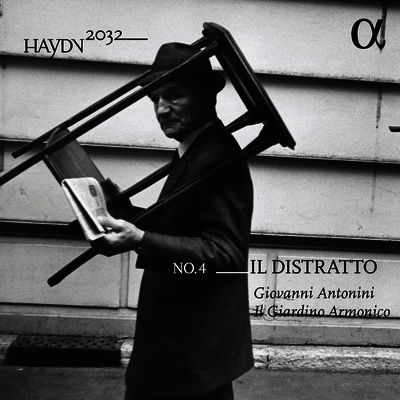
VOL. 4 _IL DISTRATTO
CD
Giovanni Antonini, Riccardo Novaro, Il Giardino Armonico
Symphonies No.12, No.60, No.70 "Il Distratto"
D. Cimarosa: Il maestro di cappella
Available at:
Bider&Tanner, Basel
Outhere Music
Download / Stream
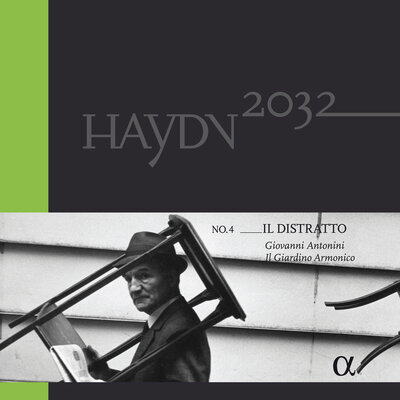
VOL. 4 _IL DISTRATTO
Vinyl-LP with book (download code CD included)
Giovanni Antonini, Riccardo Novaro, Il Giardino Armonico
Symphonies No.12, No.60, No.70 "Il Distratto"
D. Cimarosa: Il maestro di cappella
Essay "The prince and the pyramids" by Alain Claude Sulzer
Available at:
Bider&Tanner, Basel
Joseph Haydn Stiftung, Basel
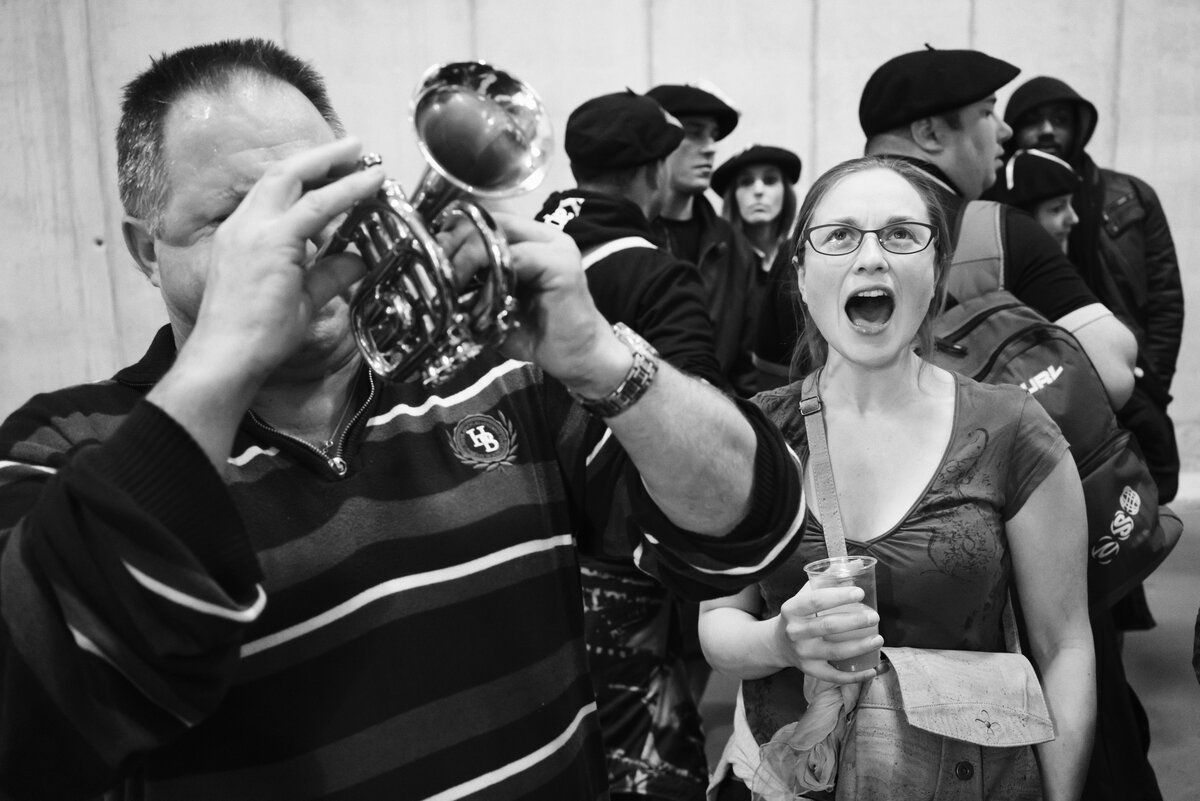
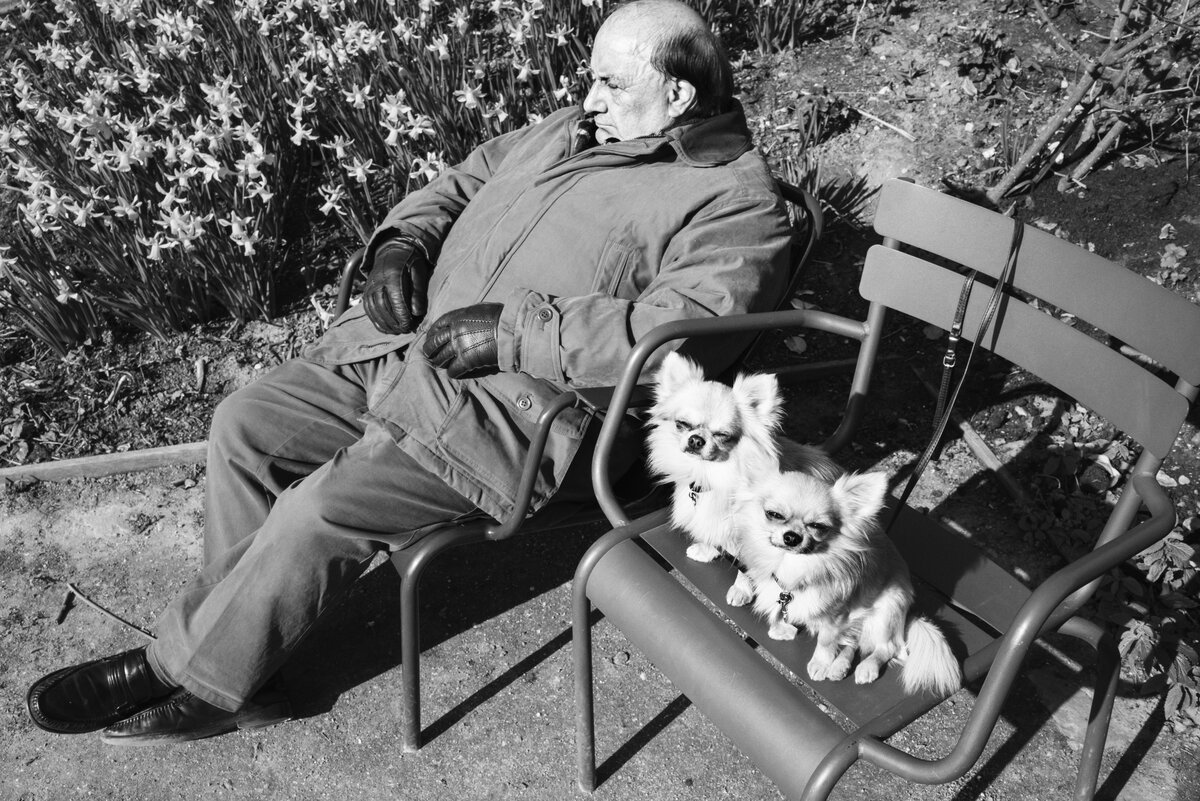
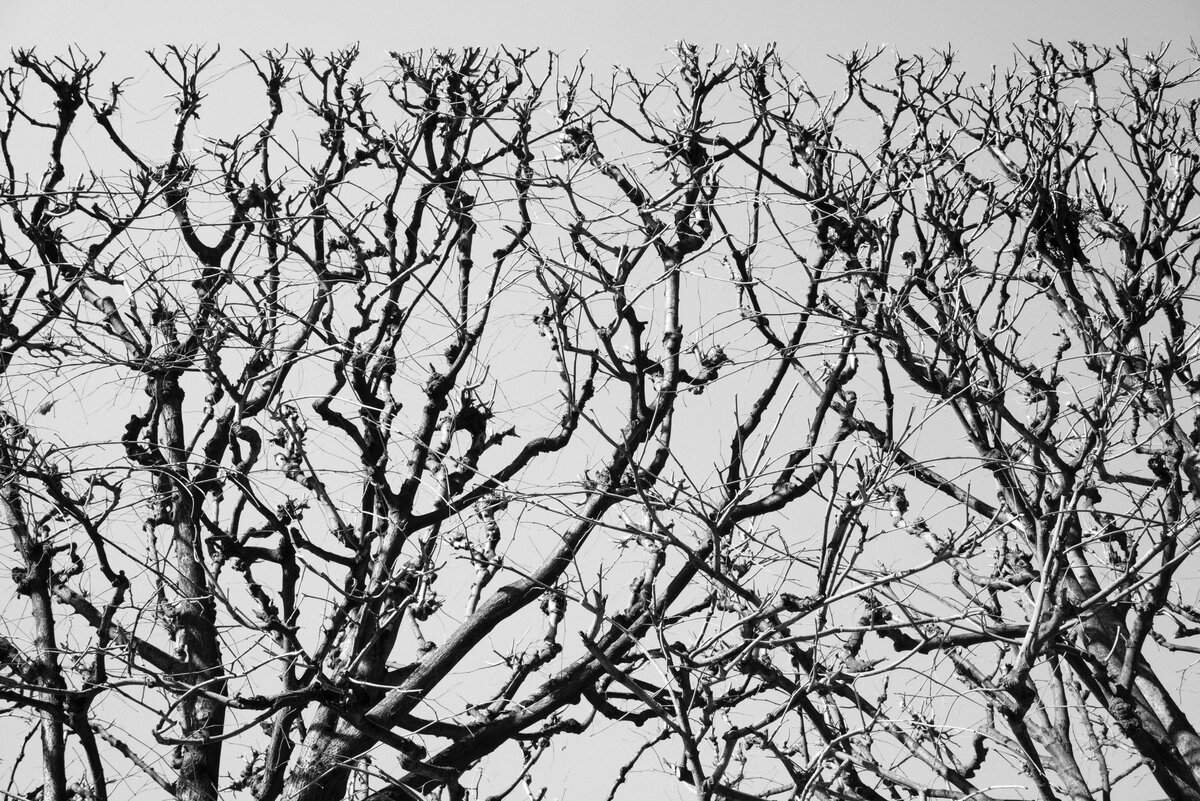
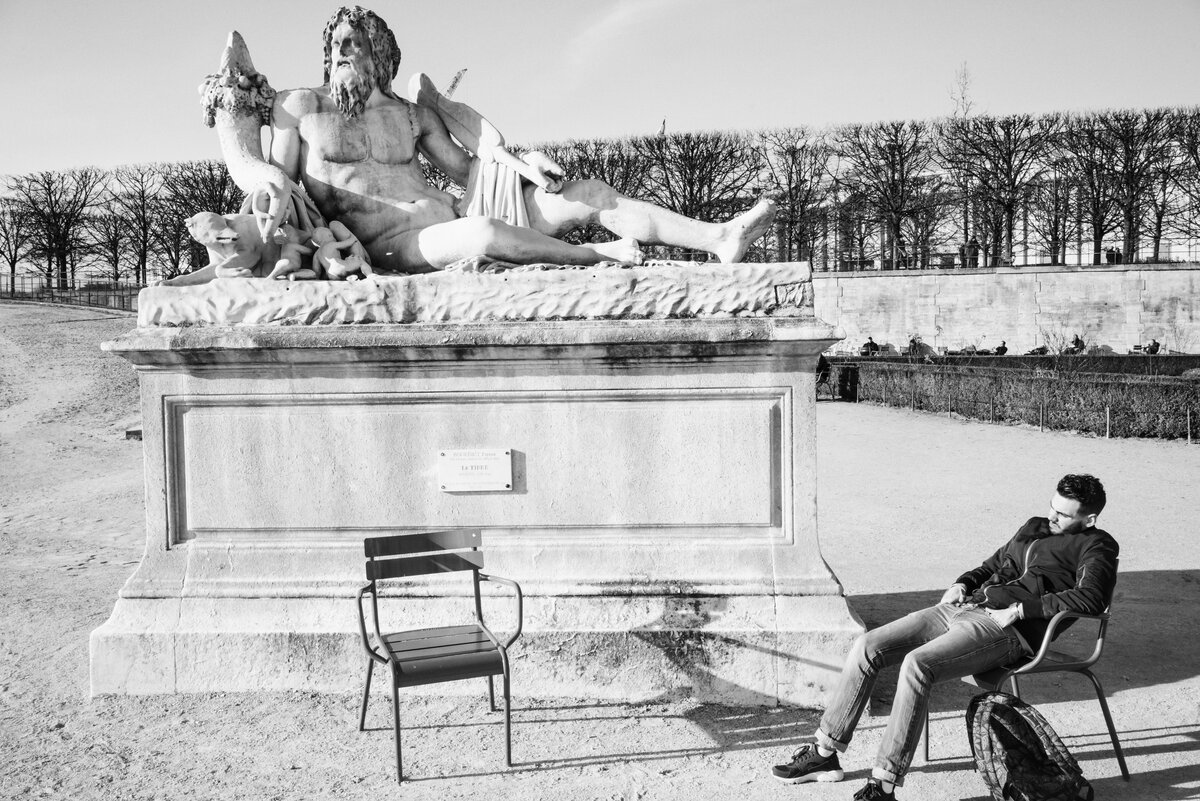
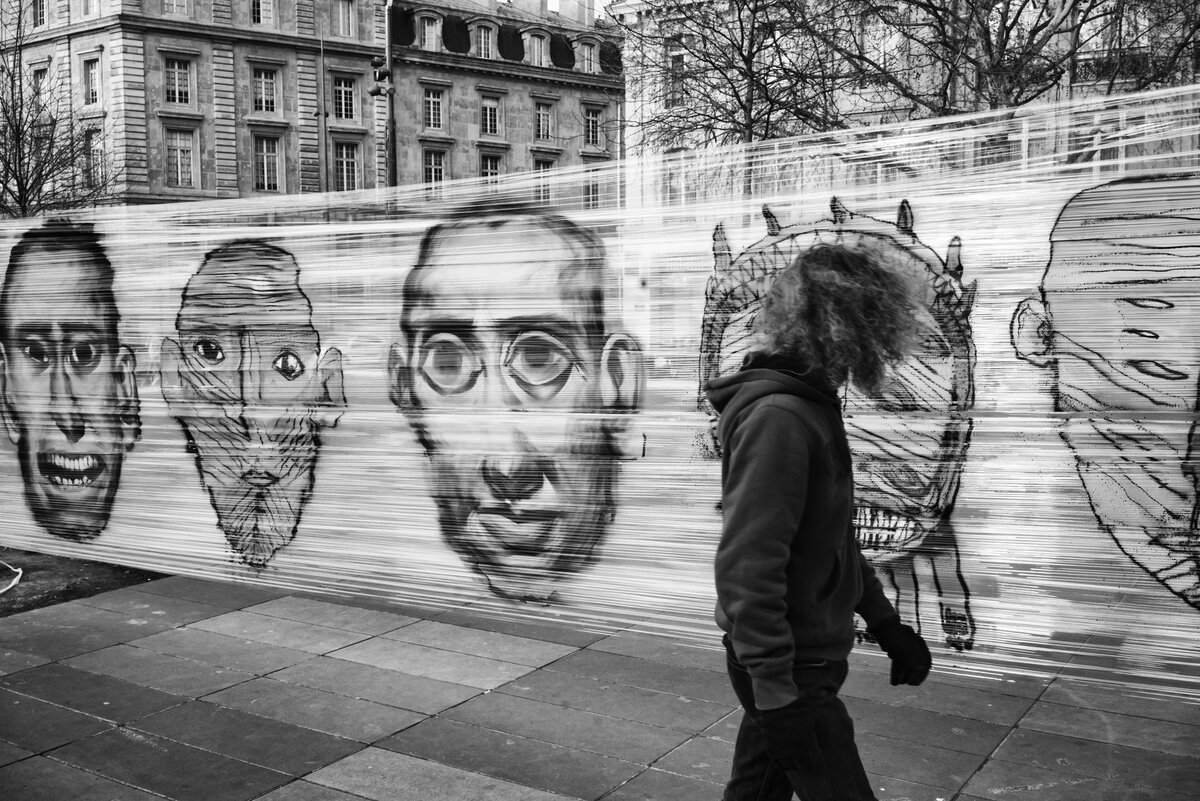
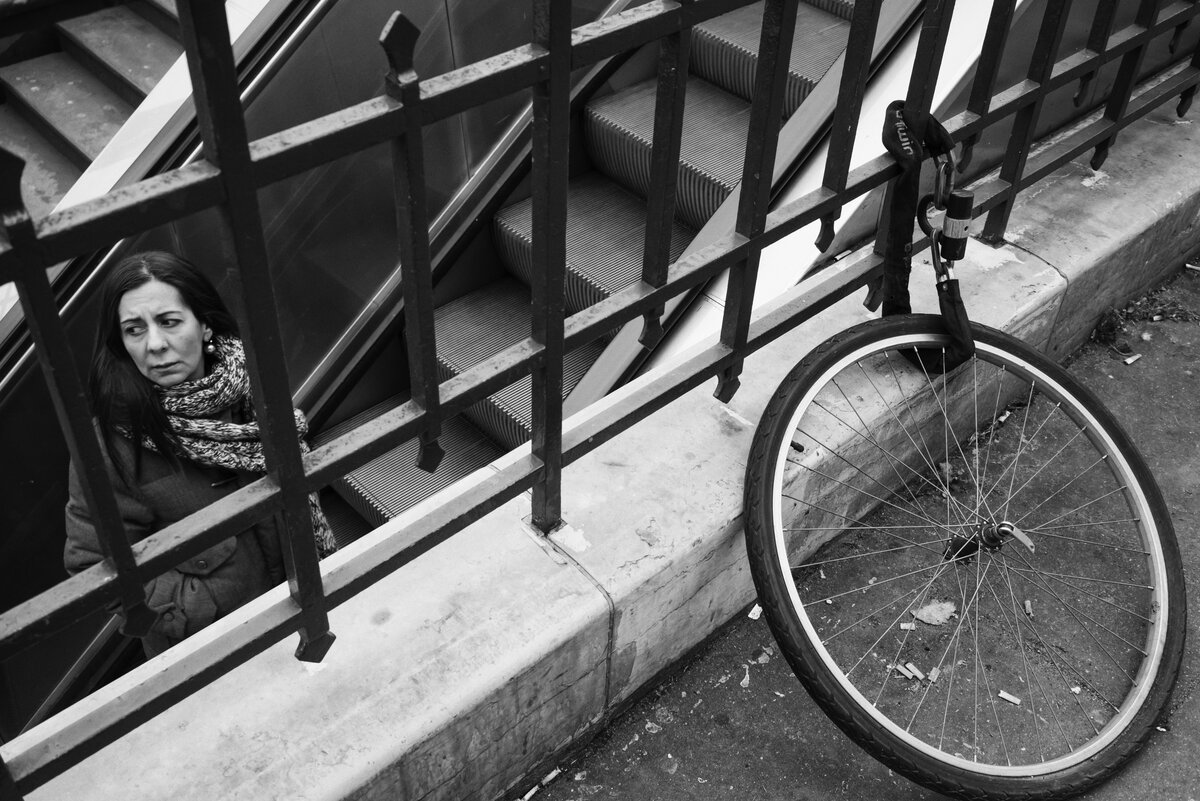
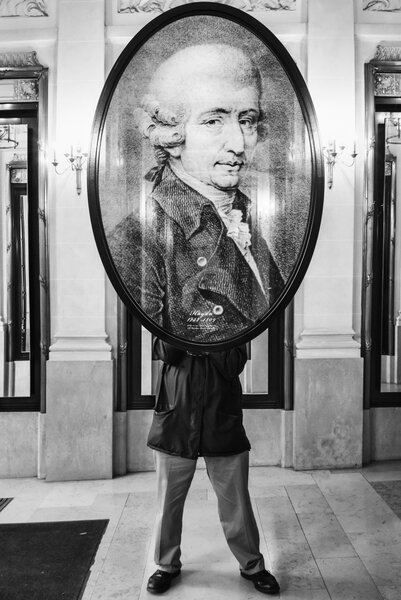
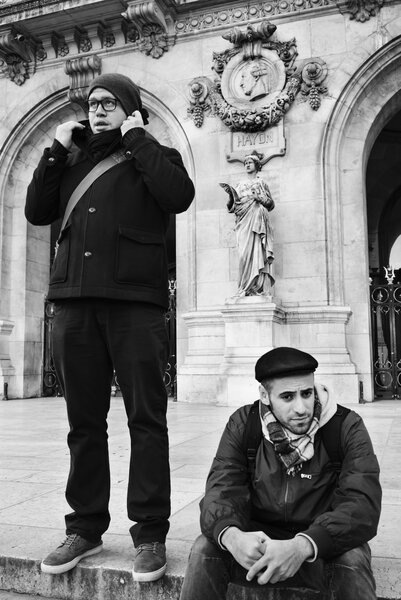
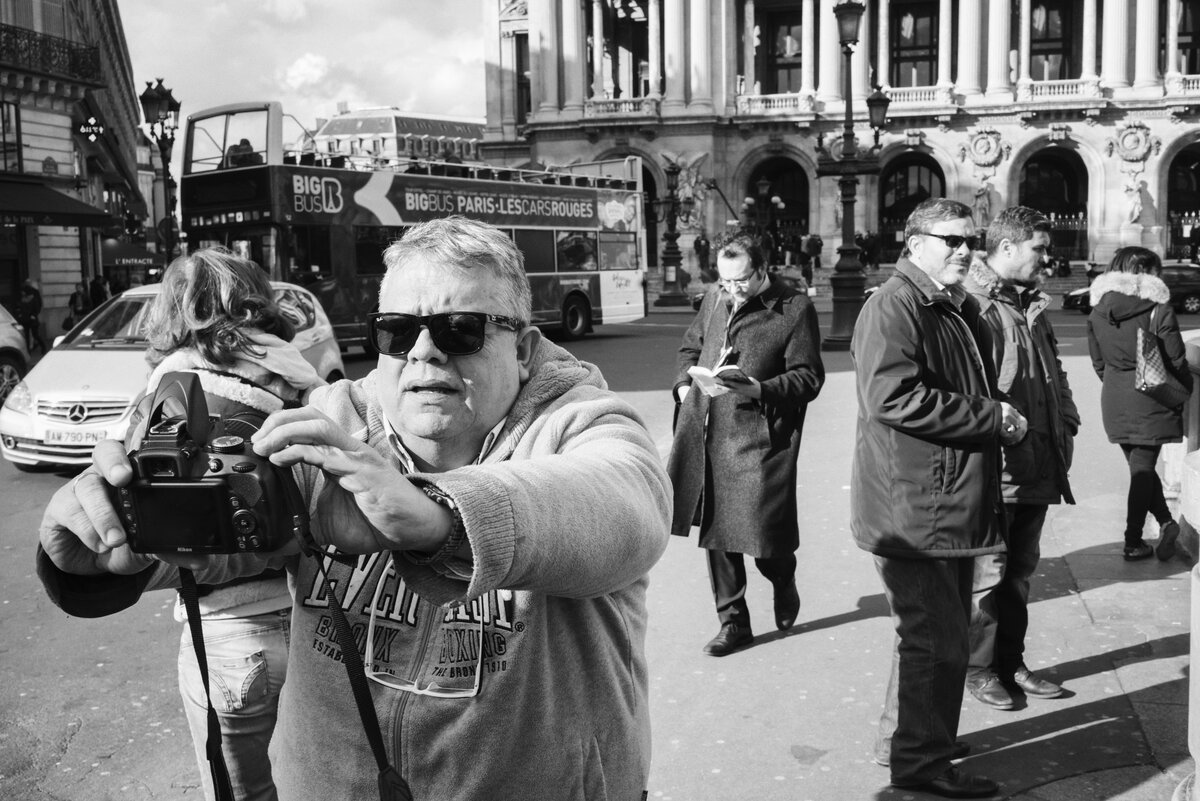
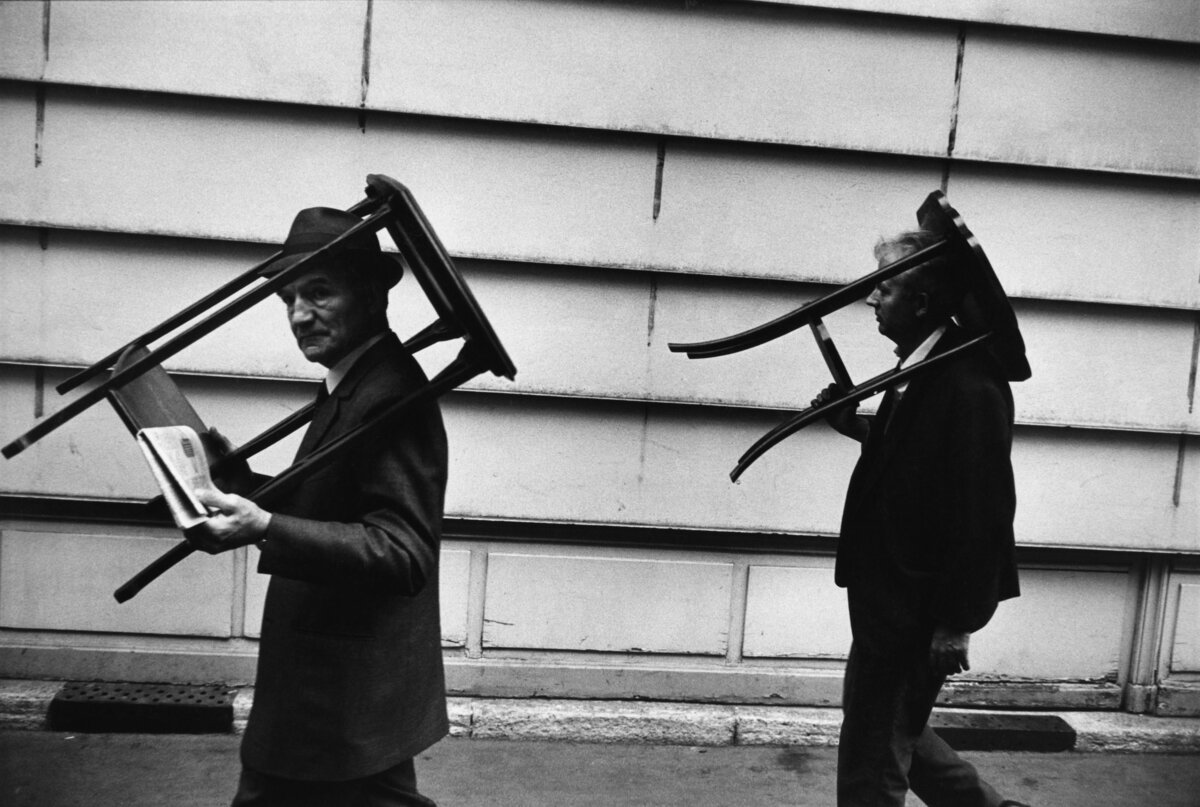
© Richard Kalvar / Magnum Photos
Biography
Photographer, Magnum Fotos
Richard Kalvar
Photographer, Magnum Fotos
Richard Kalvar is American, born in New York in 1944. At the age of 20 he fell into photography by chance, and moved to Paris five years later. He has worked extensively in the US, Europe and Asia, generally in black and white for his personal photography. He often sees the world with a dark but tender irony, and likes to work on the edge where reality and appearances collide. In 1975 Kalvar joined Magnum Photos, and has served as its vice president and president.
Apart from on TV, I hadn’t yet experienced a real operatic performance. I still contented myself with sitting in an easy chair and letting the music carry me along with it. The question as to how the music made its way to me was of no interest to me at all – just like a prince finds it utterly natural that music should be played at his court all day long, or at least whenever it pleases him, whether at midnight, on an early evening, in his boudoir, at the dining table, in bed, in the opera house or in his concert hall. He didn’t listen by pressing a button, to be sure, nor was he dependent on a needle running along the grooves of a vinyl disc. He just gave a wave of the hand for the music to start or stop. But the difference was minimal, when you consider how similar the results actually were. We were both lords over the music played for us – he in his chateau, I in my comfy chair.
Excerpt from the essay "The prince and the pyramids" by Alain Claude Sulzer
The essay "The prince and the pyramids" by Alain Claude Sulzer was published in the vinyl edition vol. 4.
Biography
Literary consultant, writer
Alain Claude Sulzer
Literary consultant, writer
Alain Claude Sulzer's breakthrough came in 2004 with the novel "Ein perfekter Kellner (A Perfect Waiter)", which was translated into numerous languages and for which he received the prestigious Prix Médicis étranger in France in 2008. Other novel publications include "Zur falschen Zeit" (2010), "Aus den Fugen" (2012), "Die Jugend ist ein fremdes Land" (2017) and "Unhaltbare Zustände" (2019). This autumn his new novel "Doppelleben" will be published. Regular essayistic activity, e.g. for the NZZ. Musical-literary collaborations include Yaara Tal, Oliver Schnyder, the Sinfonieorchester Basel and the Joseph Haydn Foundation Basel (for the Haydn2032 project).










